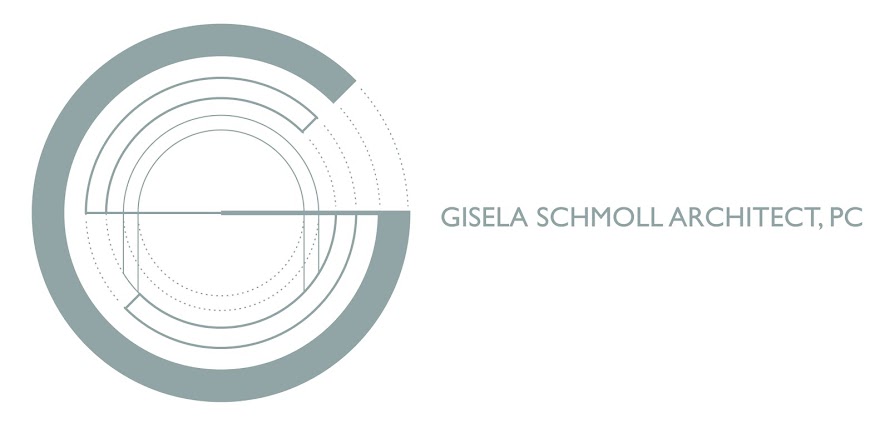Existing Conditions and Code Research
Schematic Design
Design Development
Construction Documents
Permitting
Bidding and/or Negotiations
Construction Observation
Phase 1 – Existing Conditions and Code Research
The first two steps in any project are often critical for success. We start by researching the appropriate zoning code that applies to the site. Zoning varies from city to city AND from neighborhood to neighborhood. San Francisco has a great on-line map that makes basic zoning research easy:
http://propertymap.sfplanning.org/?dept=planning
The second step is to spend a day measuring the existing building and site. From these measurements a three dimensional computer model is created from which the existing floor plans, sections, exterior elevations and site plan are generated. Given that these drawings are the basis of all future work, it's critical that they are accurate. Therefore we do not work with plans drawn by others. A survey may be required by a professional surveyor.
Phase 2 - Schematic Design

Once the existing conditions are drawn, we meet with the client to discuss/sketch their design requirements in greater detail. From this meeting the first set of schematic floor plans and three dimensional line drawings are created. Typically two to three floor plans are presented to the client. Based on the client's feedback the design is refined and presented again. Depending on both the client and the job, we may create several iterations of the schematic design. The time frame varies greatly for this phase, it may be as little as a month or as long as several months.
At the end of Schematic Design the drawings can be sent for preliminary construction bidding and engineering. Additionally, some clients elect to hire a contractor to work with us through the remainder of the phases to manage cost.
Phase 3 - Design Development

In this phase, we begin to
develop the details of the design. In contrast to Schematic Design where, for
example, we develop the overall floor plan of a kitchen that simply indicates
where the big blocks of cabinetry are located, in Design Development we will
develop the actual cabinet sizes and refine the proportions. In order to communicate the design intent,
interior and exterior elevations are drawn.
In conjunction with the floor plans, the interior designer will use the
elevations to begin selecting fixtures and finishes. Typically, the architect will work closely
with the interior designer to ensure that the design develops into a cohesive
visual and functional design.
At the completion of Design
Development, the documents can be utilized for structural engineering, energy
analysis and more accurate cost estimating.
Phase 4 - Construction Documents

The bulk of the work we do happens in this phase. The construction documents are developed sufficiently for construction and that means a tremendous amount of detail drawings. Ideally, the major design details should be drawn to avoid confusion during construction. These include window and door details, cabinetry details, roof overhangs, connection details of decks, guardrails, etc. If left undrawn, many design decisions are made by the contractor and the final result may not reflect the design intent.
The construction documents represent the final design approved by the client. With our assistance, the client should review the drawings very carefully as changes made later can add substantial cost, both in professional fees and construction change orders.
Phase 5 - Permitting
The construction documents are submitted to the city Planning and Building Departments for review. If the project is an interior remodel then it will not be subject to Planning review and in some cities may obtain an over-the-counter permit. If exterior changes are required, the process could be quite lengthy. Once the drawings have been reviewed, the city will send the architect “plan check comments”. These are usually small revisions that need to be made to the drawings to be code compliant. Most projects have one round of comments, but some may incur a second round. Once all changes are accepted by the city, the permit is issued to the general contractor.
Phase 6 - Bidding and/or Negotiations
While the drawings are being
reviewed by the city, the project is sent to general contractors for bidding.
Typically three to four contractors bid on a job. The architect usually manages
the bid process by answering questions the contractors may have, doing
walk-throughs of the site and comparing bids. We will provide a list of
contractors that we have worked with in the past that have a track record of
good workmanship and completing jobs on budget.
Alternatively, the client may
choose to do a negotiated bid with on general contractor. Given the current backlog that most reputable
contractors are experiencing, this will allow the client to get into a
contractor’s queue prior to completion of construction drawings. In this scenario, construction usually starts
as soon as the permit is issued. With
competitive bidding there may be a delay between the permit being issued and
construction commencing.
Phase 7 - Construction Observation
At this point, the general
contractor becomes the lead person on the project and the architect takes on a
supporting role. The contractor is responsible for all aspects of construction
including inspections and construction methods. We will be available to address
any issues that arise. The amount of construction observation required varies
greatly. For smaller projects, we may be on site once a month, for larger
projects, site visits may occur weekly.
We will schedule regular walk-throughs with both the contractor and
client to discuss construction issues and review the progress. The client
should always address construction questions to the architect and we will
discuss them with the contractor. A
clear chain of communication is important in order to avoid costly rework. Once construction is finished, the contractor,
client and architect do a final walk-through of the job site. Any items needing attention are added to a
punch list for the contractor to correct before receiving final payment from
the owner.
